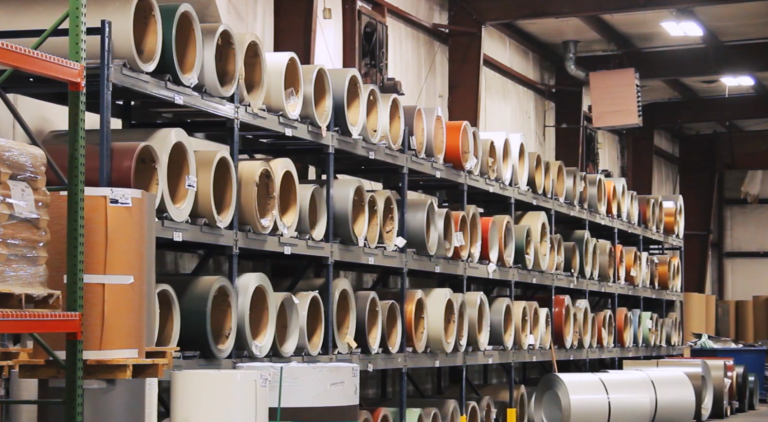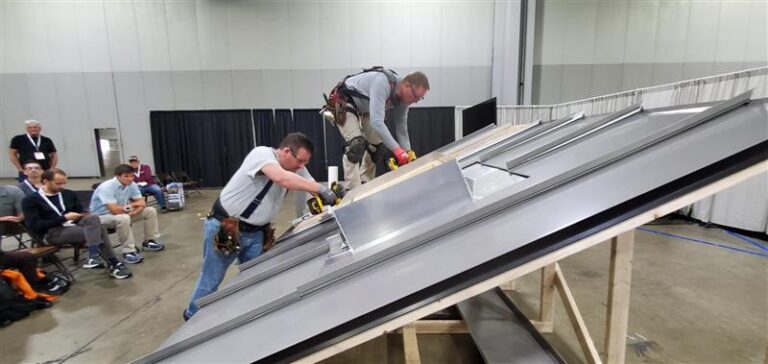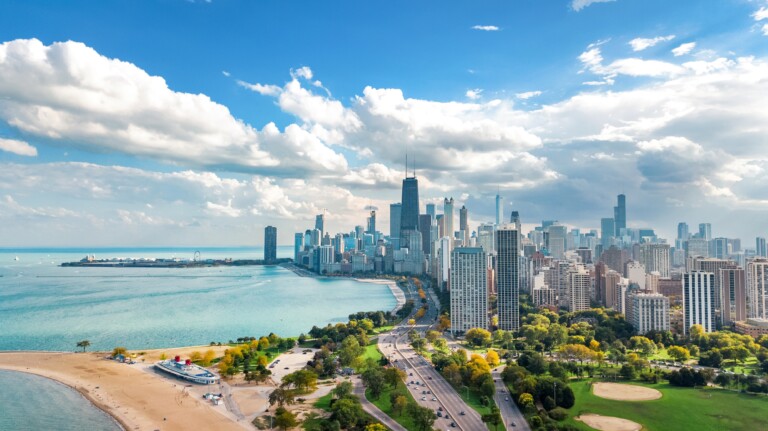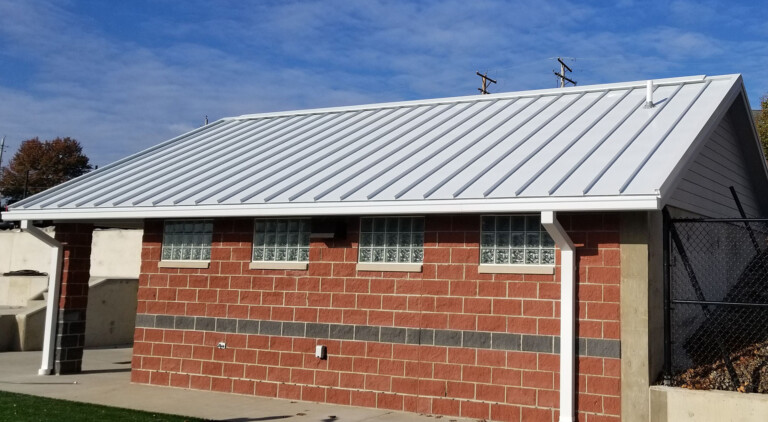Metal Roofing & Hail Damage: How Hail Is Tested & Insurance Waivers
Hail damage is a common concern for property owners in hail-prone regions and environments. Discover the considerations that affect hail damage, how hail impact is tested, and if you should...
It’s a common myth that metal roofing will be dented or compromised by almost any hail event it comes in contact with. This is actually untrue.
In fact, most hailstorms don’t produce hailstones large enough to affect a metal roof. That being said, there are regions where hail damage on a metal roof is more of a threat, which raises questions regarding home/property owner’s insurance.
At Sheffield Metals, we have an entire Technical Department dedicated to testing our metal to withstand significant hail and debris impact. On top of that, our technical representatives have experience in dealing with insurance companies, cosmetic hail damage waivers, and potential claims.
That’s why we think discussing some of the common questions and concerns associated with hail events is critical. In this article, we’ll cover:
- How hail can affect a metal roof.
- The testing standard for hail impact.
- An explanation of hail damage waivers from insurance companies.
- Should you sign the cosmetic damage waiver or not?
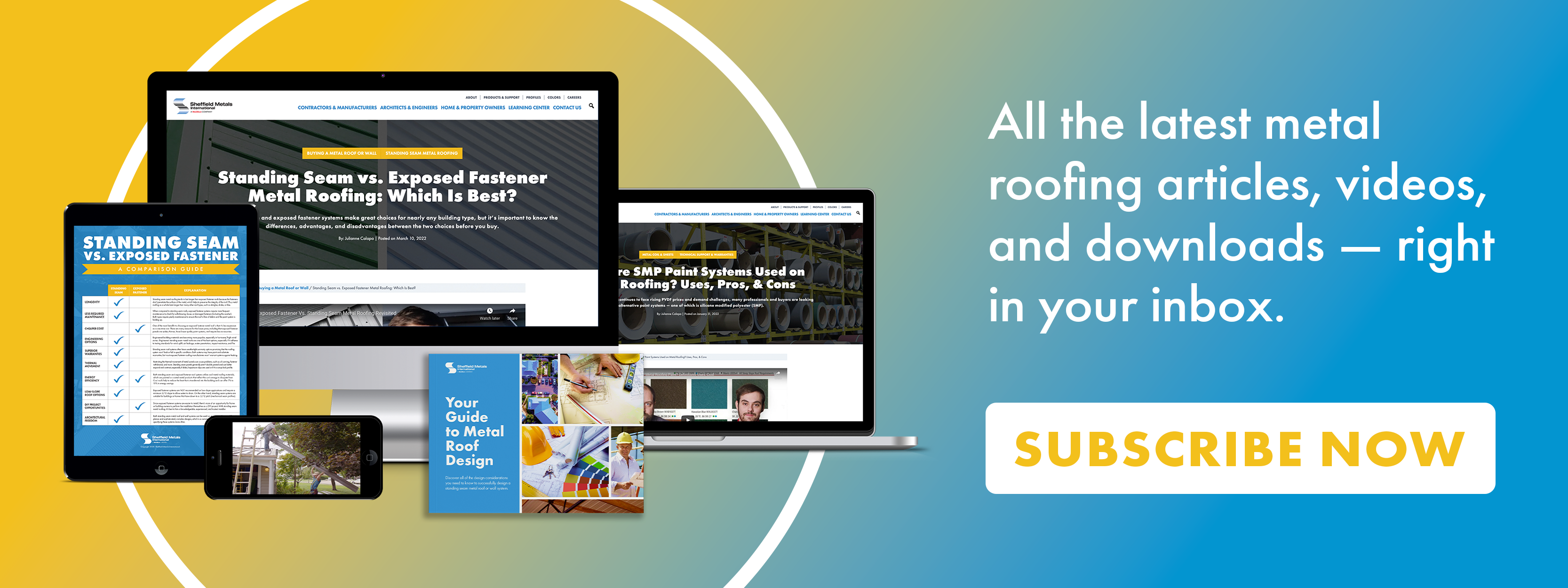
How Can a Hail Event Affect a Metal Roof?
How hail will affect a metal roof is a frequently discussed topic throughout the industry, especially in architectural applications. The truth is that hail can affect a metal roof in more ways than one.
By nature, most metal material types, such as steel, aluminum, copper, etc., used in metal roofing systems are malleable and therefore can change shape under stress.
When we’re looking at how a metal roof can be affected when in contact with hail or other objects, there are two significant differences: Denting vs. puncturing.
- Denting – If the panels of a metal roof are dented from hail, it’s mainly a cosmetic or aesthetic issue that will not cause the roof to fail. While it might be considered unsightly to some property owners, denting does not require structural fixes and might be the best-case scenario when compared to a punctured roof system.
- Puncturing – A roof punctured by an object is not cosmetic damage and can cause a roof to leak or even fail if severe enough. The puncturing of a metal roof due to hail is a significantly less likely occurrence than denting, as most hail storms produce smaller hailstones. However, the possibility of hail puncturing a roof is much more of a concern in areas with stronger hailstorms.
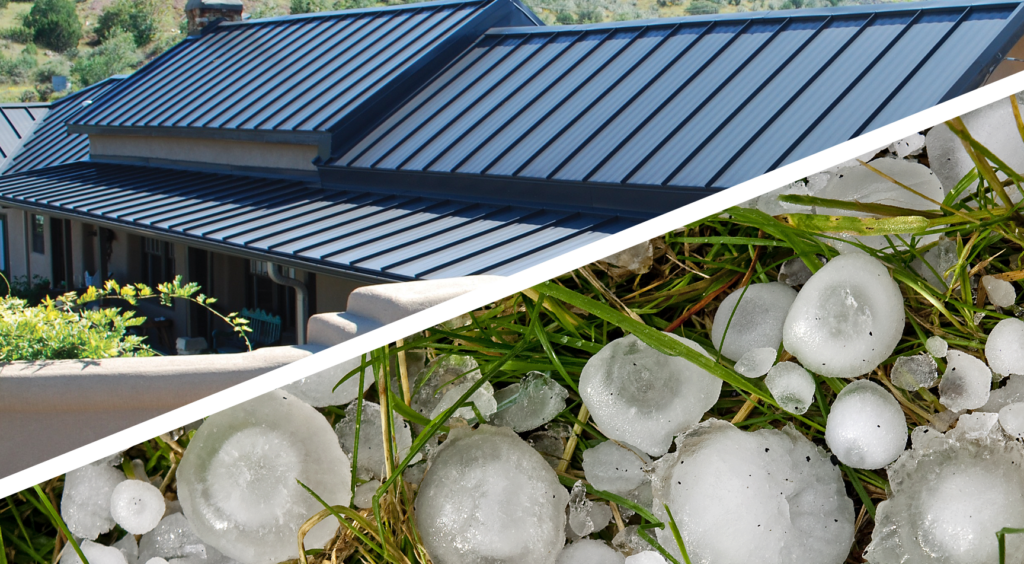
Factors That Can Affect the Level of Hail Damage on a Roof
As it applies to hail and how much aesthetic or physical damage it does to a metal roof system, it varies and depends on several factors.
Hail Size
Much of the damage depends on the size of the hail the roof comes into contact with. The industry standard, which we will discuss in the next section, that is used to measure how hail will affect a metal roof, tests objects up to two inches in diameter. But if your project is in Texas, Colorado, or another location susceptible to four- to six-inch hailstones, there aren’t many scenarios where hail of that size doesn’t cause some damage. It really just depends on the strength of the storm.
Metal Thickness
Another factor that can affect the degree of denting or damage to a metal roof is the metal’s thickness. The higher the gauge, the thinner the steel metal substrate it, so a 29-gauge roofing system will be more susceptible to damage than a 22- or 24-gauge metal roof. On the other hand, aluminum coil is sold according to the decimal of thickness, and the higher the decimal the thicker the substrate. For example, a .032 aluminum roof is more prone to hail damage than a .040 roof.
Roof Slope
If you think of a car severely damaged in a hail storm, you will notice that the dent frequency and depth vary by the car’s contours. Similarly, the slope of the roof or wall structure is another element to consider. As it applies to hail, a lower-sloped roof will take more of a direct hit from the hailstones than a roof with a steeper slope. A sharper angled roof is likely to deflect more of the hail and cause less damage.
Rib Roller/Striations vs. Flat Panels
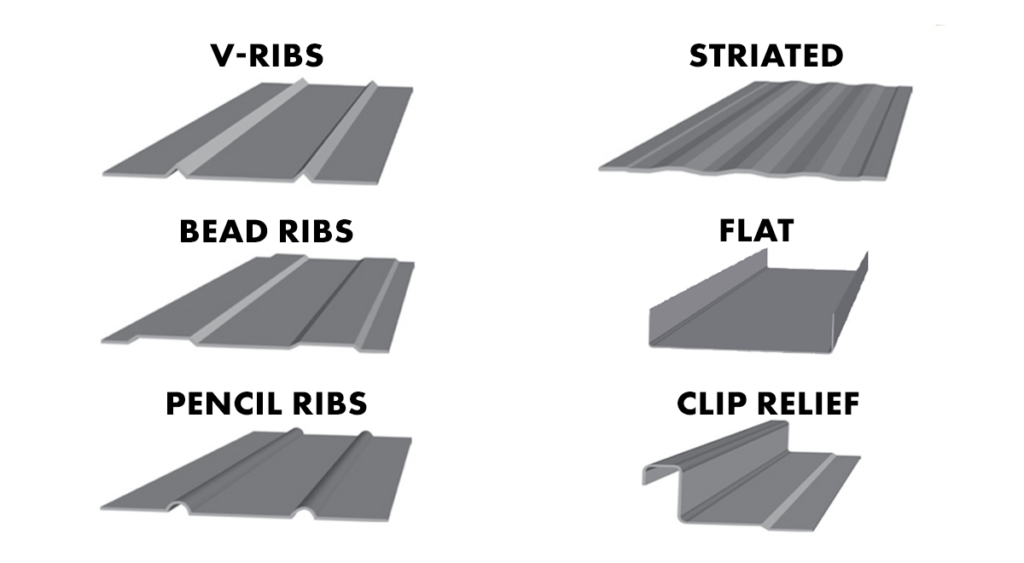
At Sheffield Metals, we strongly encourage installing panels with some degree of structure within the flat section of the panel. For example, striations, bead ribs, pencil ribs, or some other rib roller profile will help conceal potential hail damage. We understand that some consumers are drawn to the look of flat panels, but it’s important to know that even a light hail event can create visible dents on a roof with strictly flat panels. So, if you live in an area where hailstorms are a concern, you might consider adding a rib roller.
Roof Deck Type
The substrate or roof deck installed beneath the metal panels also affects how much impact hail can have on the roof. If you have solid decking support under a metal panel, the metal panel can’t flex as much when hit with hailstones and might not receive as much damage. If the roof system doesn’t have a roof deck, is installed over open framing, or is installed over a batten system, the panels have more of an open space where it could dent and create more of a crease.
Embossed Metal
Metal that is embossed, such as stucco-embossed systems, can also help conceal the potential dings and dents that a hailstorm can inflict on a metal roof. Remember that embossed metal is more expensive, as it is a specialty product.
Paint System Finish
Finally, while no paint system can make less of a dent on the surface of a metal roof, the finish type can slightly help. Matte finishes will do a little better in concealing any dimples, while glossy finishes will reflect more light and highlight the dents.
Industry Standard Testing for Hail/Impact on a Roof System
The industry standard, UL 2218 – Standard for Impact Resistance of Prepared Roof Covering Materials, exists to test a metal panel’s resistance to puncturing or failing when it comes into contact with items, including hail.
The testing method “provides impact resistance data for the evaluation of prepared roof covering materials…The test evaluates the effect of impact from a steel ball at locations on the assembly selected to be most vulnerable, such as (but not limited to) edges, corners, unsupported sections, and joints.”
Four steel balls of different sizes are dropped onto the metal panels from varying heights. They drop the ball twice on the same spot of the metal roof, and if it doesn’t structurally go through the metal panel, doesn’t crack it, or doesn’t cause the roof system to fail, then it passes.
Rating is determined on a scale from Class 1 to 4, with Class 4 being the toughest and least likely to fail when in contact with objects. In other words, it will pass as long as the object’s damage doesn’t stop the roof from serving its structural purpose. For reference, Sheffield Metals’ sheet and coil have a Class 4 rating.
Hail Damage Waiver & Insurance Coverage Definitions
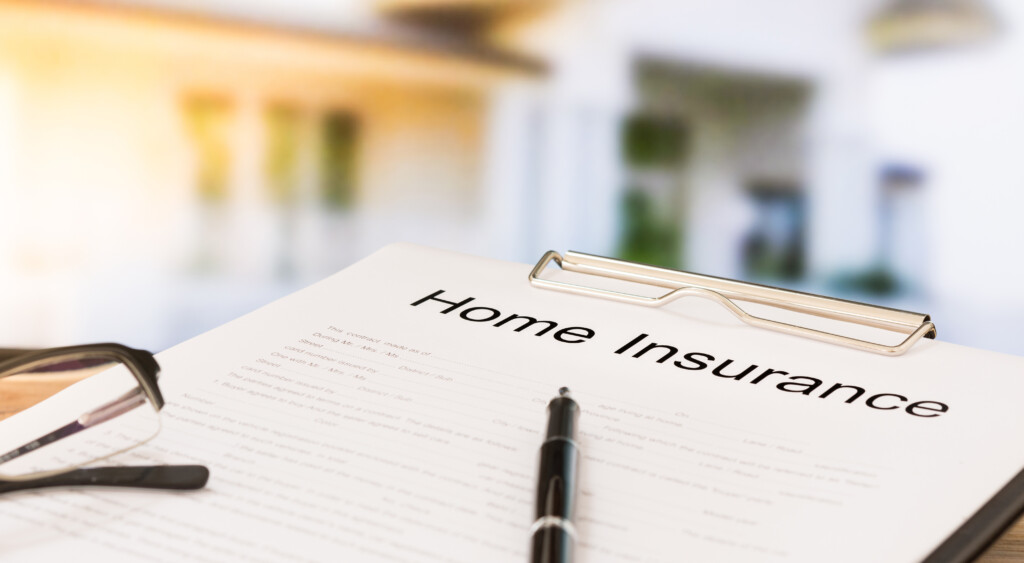
Now that we’ve covered the design considerations of a metal roof as it applies to protection from hail damage, you should look at your insurance policy next. We get dozens of questions every year about homeowner/property insurance coverage and metal roofing. We understand that it can be a complicated subject that differs from policy to policy, but we think it’s critical to discuss the topics we often hear.
Let’s go through some common phrases or words used by insurance providers.
Actual Cash Value
Let’s say you buy a roof for $20,000, and the expected life of that roof is 20 years. Essentially, insurers will depreciate the roof’s actual value by $1,000 every year. If you have a claim at year 10 and you’ve got a $1,000 deductible, the insurance company would be responsible for $9,000 of that claim:
+ $20,000 – Original cost
– $10,000 – Your roof has depreciated for 10 years @ $1,000 per year
– $1,000 – Your deductible
= $9,000 – Actual cash value of the roof replacement
Replacement Cost Coverage
Replacement cost coverage is a plan type where the insurance company is responsible for paying the full cost of replacing the roof no matter what. This tends to be less common but still comes up occasionally. Additionally, if you can get such a policy from your insurer, you should expect to pay a premium, especially in hail-prone regions.
Wind and Hail Deductibles
Depending on where you live, what insurance company you have, and a variety of other factors, you might be offered a wind and hail deductible. For example, if you have a 2% wind and hail deductible on a $200,000 house, you would be responsible for paying $4,000 for a wind or hail event before the insurance would cover the remainder of the claim. You can often get a wind and hail deductible policy separate from a homeowner’s insurance policy, giving you lower-priced insurance and wind and hail event coverage.
Cosmetic Damage Exclusion for Metal Roofs
The most popular item we receive questions about is the cosmetic damage exclusion for a metal roof, which may also be referred to as a hail damage waiver, hail or wind loss waiver, cosmetic loss limitation endorsement, or otherwise.
A cosmetic damage exclusion for metal roofs is a waiver that the home/property owner is offered by insurance providers to exclude any cosmetic damage done to a metal roof during a hail or wind event. This means that if hailstones, falling branches, or other debris dent the roof’s surface but these dents don’t structurally affect the roof, you cannot make an insurance claim to replace the roof. This waiver to exclude cosmetic damage is used to lower the premium cost.
Hail Damage Waiver: Should You Sign it or Not?
So, should you take the plunge and sign the hail damage waiver to save a little money? Or not sign the waiver and a little more and have the cosmetic protection? Well, it depends.
Before we get into the considerations, it’s critical to have an intelligent discussion with your insurance provider before you sign anything. Insurers have experts on staff who deal with this kind of waiver daily and can walk you through what is or isn’t covered, to what point, and how a cosmetic damage waiver affects the premium cost.
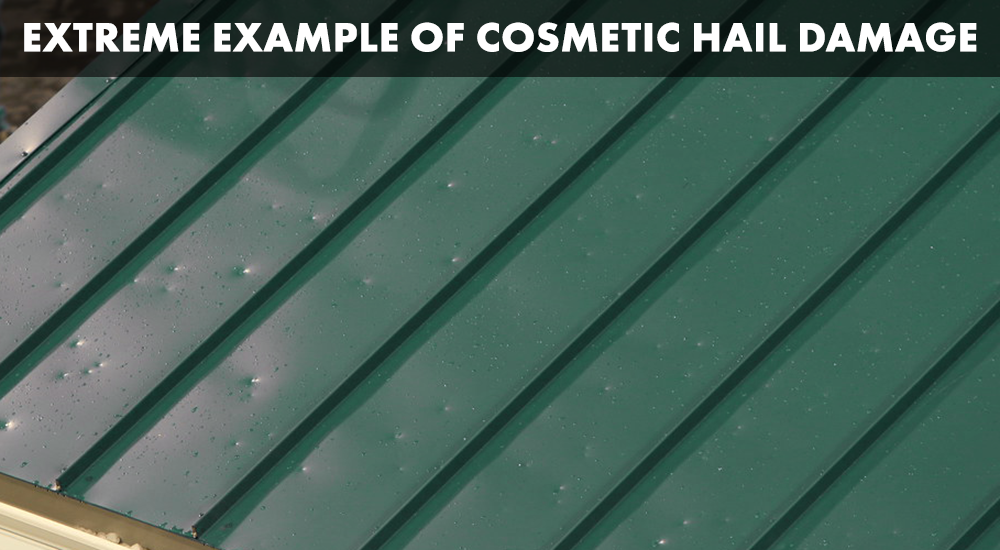
Best Factors to Consider with Hail Damage Waivers
The cost of your metal roof – If you have a large/expensive metal roof ($10,000+), it’s worth paying the extra insurance cost to protect it. and make sure it looks good and performs well for years to come. Insurance is intended to cover what’s important to you, so if you have tens of thousands of dollars invested in a metal roof, you likely want to ensure it’s covered both cosmetically and structurally.
Where you’re located and frequency of major hail events – Your location significantly matters, as hail or wind storms are not prevalent in all areas of the United States. If you live in a place like Florida or California, hail damage waivers might not even come up in discussions with insurance providers. Or, if it does, you can feel more confident taking the cosmetic damage exclusion. However, if you live in places like Texas, Colorado, or Kansas, where the likelihood of cosmetic hail damage is higher, you might want to consider not signing a cosmetic hail exclusion waiver.
Thickness and structure of the metal roof– As we discussed, the thicker the metal roof is (22-gauge, for example), the less likely it is to damage easily during a hailstorm. So if your metal roof is thinner and more susceptible to denting, such as a 26- or 29-gauge system, you might want to consider not signing a cosmetic hail damage waiver. Additionally, it might be easier to see dents if the panels on your metal roof don’t have a stiffening rib/rib roller in the flat of the panel, so you might want to pay a little more each month for the insurance coverage.
Roof exposure – Every property has different features that might affect the likelihood of damage from hail or wind. For example, if your home or building is beneath trees and could face cosmetic damage from falling branches during a wind event, you might want to avoid signing the exclusion. Or, if you live in an open area where hailstorms are relatively uncommon, signing the cosmetic damage waiver might make a little more sense.
Example of Issues with Cosmetic Damage Waivers
In the past, we’ve had homeowners approach us who have taken a cosmetic damage waiver that and have experienced a hailstorm or wind impact event. Their metal roof has dimples or dents, which technically are not covered under their waiver. However, if the dents caused the paint to crack or perforate the substrate, Sheffield Metals classifies that as a failure. If the paint system is flaking off, it will eventually cause a roof system failure in the near to distant future.
As a metal roof manufacturer, that quantifies as a failure or a system failure that the insurance companies should replace, as it’s past cosmetic. That said, some insurance companies will not consider this circumstance a failure and will strictly enforce their policy.
So, if you’re worried about the possibility of this occurrence, it might not be worth it to have the cosmetic damage exclusion for your metal roof.
Final Thoughts on Metal Roofing & Hail Damage
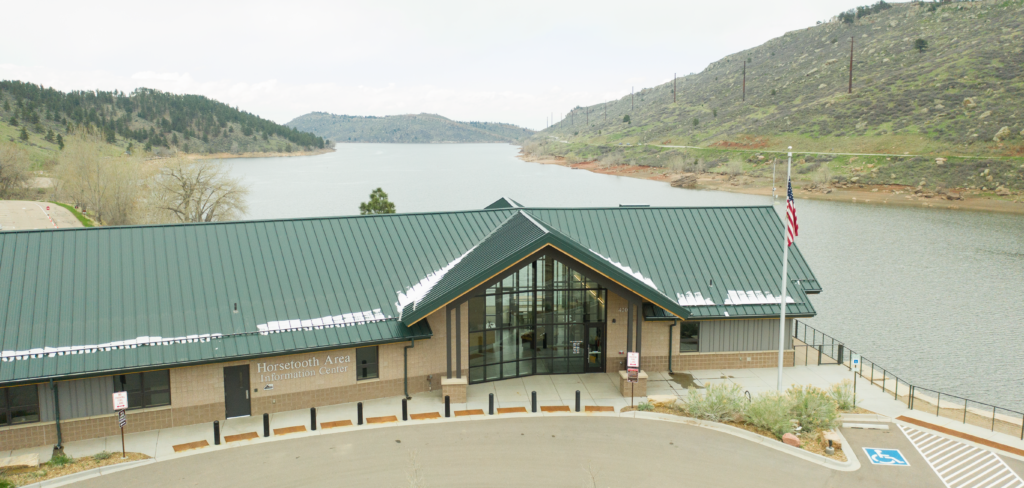
As you can tell, hail and wind damage on a metal roof can be a complex topic. Luckily, most hail and wind events are small and don’t cause cosmetic or structural damage to metal roofing. However, it’s best to be prepared if you are in a region susceptible to intense hail or wind storms.
Here are some suggestions when considering insurance for your metal roof:
- It’s essential to ensure the metal manufacturer is listed with the insurance company from which you’re getting home or property owners’ insurance. If they aren’t listed, contact the manufacturer and ask if they can work with your insurance company. With hail and wind insurance claims, it’s critical to double-check that the manufacturer and insurer will work together.
- When it comes to making a claim with an insurance company, it’s often recommended that you get a contractor involved on the front end. For example, if the insurance company tries to replace your 24-gauge metal roof with a cheaper 29-gauge metal roof, it’s not an “apples-to-apples” replacement. Having a trusted contractor there can help ensure you get the correct damage replacement for the money you paid.
- At the end of the day, insurance is meant to cover what is important to you. If the sleek new look of the metal roof is essential to you, then don’t take a cosmetic damage exclusion waiver.
At Sheffield Metals, our Technical Department has extensive knowledge in all things hail and other impacts that can affect your metal roof. Our representatives are available to answer your questions about hail or wind damage and cosmetic insurance waivers. Plus, they can assist when dealing with insurance companies and contractors if you’re looking to file a claim.
Contact the Technical Department today for free expert assistance!

